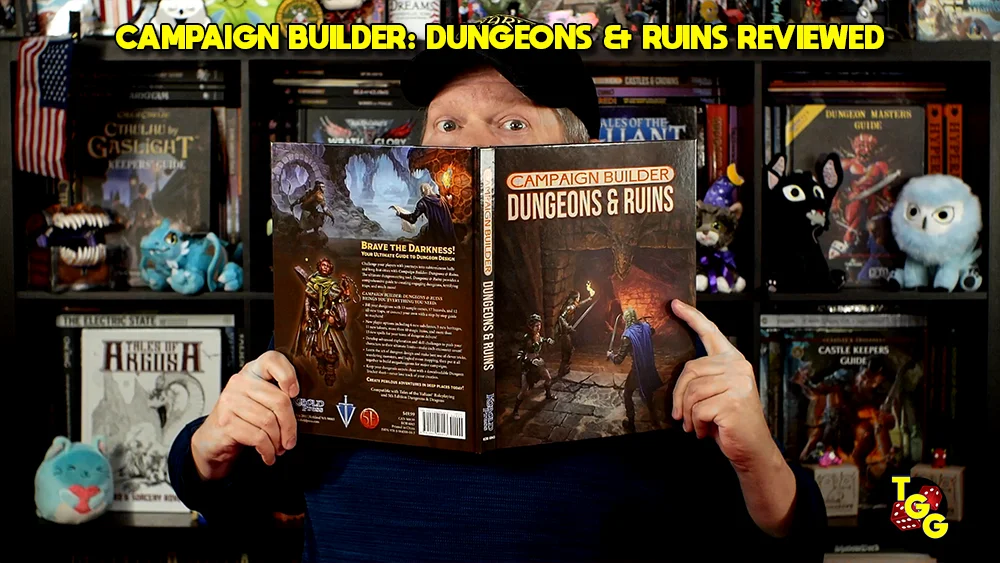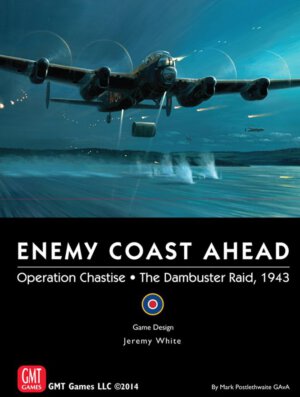
Publisher: GMT Games
Designer: Jeremy White
Year: 2014
Genre: Solitaire WWII aerial raid wargame
Players: Solitaire (with an option for three players)
Ages: 16+
Playing Time: 45 minutes or more
MSRP: $55.00
One of the classic accounts of England’s WWII Bomber Command is Enemy Coast Ahead written by Guy Gibson and now designer Jeremy White has taken Gibson’s account of the May 1943 Operation Chastise and created an interesting and detailed game aimed at simulating the raid. Prior to the war the British Air Ministry had already identified Germany’s Ruhr Valley as an important strategic target and the destruction of valley’s dams would be a number one priority. Operation Chastise would target the Möhne, Edersee and Sorpe dams in an effort to breach the dams and thus flood the valley. By mid-1942 the operation was taking shape and a top secret air wing, named Squadron X, was formed to begin training with specially outfitted Lancaster bombers armed with special bouncing bombs codenamed “Upkeeps.”
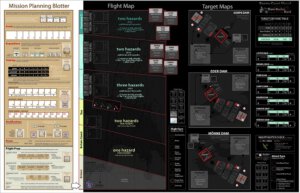
I will mention something which stood out while perusing the game and it’s certainly not a pleasant discovery. The squadron commander had a dog who had become the mascot and the name in which the dog was called is an extremely offensive racial slur; one in which African Americans normally become incensed upon hearing – especially when spoken or written by someone not black. I think the reader can surmise the dog’s name and this slur appears both in the rules as well as upon a counter representing the dog. White mentions his discomfort in repeating the name but writes he included it because the game is a historical simulation. Personally, I don’t think that washes, what which the amount of gameplay abstraction already in the game in regards to plenty of the minutia surrounding the mission. The included counter could have simply been marked as “Dog” or “Squadron mascot” without losing any historical flavor. I’m dumbfounded neither White nor the development team realized including the slur wasn’t going to be the best move around; GMT normally displays much better judgment than this.
Enemy Coast Ahead (ECA) is broken into three core segments: Attack, Flight, and Preparation. To begin learning the game you’ll want to start with one of the Attack scenarios as there’s even one specifically designed as a tutorial. The player has the option of playing just the Attack section, Flight and Attack, or all three as a campaign. Much of the gameplay is determined by the included game aids and some will find a bit too much of a flow chart feel to the proceedings. Readers who have already played titles such as B-17: Queen of the Skies, B-24, or The Hunters will understand the sorts of charts and tables which drive the action which make up ECA.
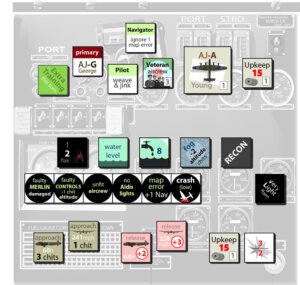
Flight – This portion of the game details the flight of the squadron from their base in Scampton to the German dams. The flight map is divided into six areas ranging from the English Coast to Ruhr and Weser zones. Plenty can happen during flight and bombers may become missing or have to return to base. The Germans may be alerted to the incoming waves of bombers and there are other Hazards the bombers will face such as searchlights, flak, faulty equipment, and even flocks of birds. Well planned recon in the Preparation phase can help to minimize some of these hazards encountered.
Lots can go wrong during the flight and your dice better not fail you!
The Lancasters have primary, secondary, and last resort targets so once they arrive in German airspace you’ll determine just what planes are where and what they can attack.
Attack – This is the portion of the game in which you should begin familiarizing yourself with the game before tackling the additional phases of Operation Chastise. Players will utilize the Target Maps to move their waves of bombers through the attack. The maps contain various zones where counters are placed depending upon where aircraft are located. Some may be circling nearby, just outside of detection, in the midst of the attack run, trying to take out defenses, or finished with or aborted their runs.
Plenty takes place during the attack although this phase doesn’t involve a lot of decision making since much of it comes down to pulling chits and keeping your fingers crossed your dice don’t go cold.
Once you’ve completed one of the nine included scenarios you’ll determine the success of the mission by calculating both positive and negative factors such as surviving aircraft, damaged to bombers, German level of alertness, and the morning reconnaissance. You won’t know how much damage the Lancasters dealt out until the mission is complete. Then you’ll check the scenario’s mission debrief to see how well (or how poorly) you’ve done.
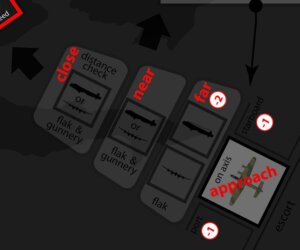
I can see where some wargamers might not find Enemy Coast Ahead their cup of tea. As I’ve mentioned nearly all of the game is governed by charts, die rolls, and chit pulls. Plus, even the most careful and diligent preparation can all come apart in the Flight or Attack sections of the game due to the sheer amount of luck coming into play. With that said, I like ECA quite a bit as it’s an interesting design and the amount of research Jeremy White put into it is obvious. I always enjoy a solitaire game (or any game for that matter) which provides me with a strong narrative once I’ve finished. ECA does that in spades. Whereas a game like B-17 or The Hunters create more of grand scale tales, Enemy Coast Ahead looks at a particular moment in the vast scope of WWII to provide a detailed, tense, and engrossing story of a group of men tasked with a near impossible mission.
I just can’t get over that damn dog counter though.
[rwp-review id=”0″]
- SOLO BORG is Up for Crowdfunding on Kickstarter - Apr 11, 2025
- Dungeon Crawl Classics: Grave Robbers of Thracia to Land in Stores in May - Apr 11, 2025
- Score Big Savings on the Between Clouds Roleplaying Game - Apr 11, 2025









